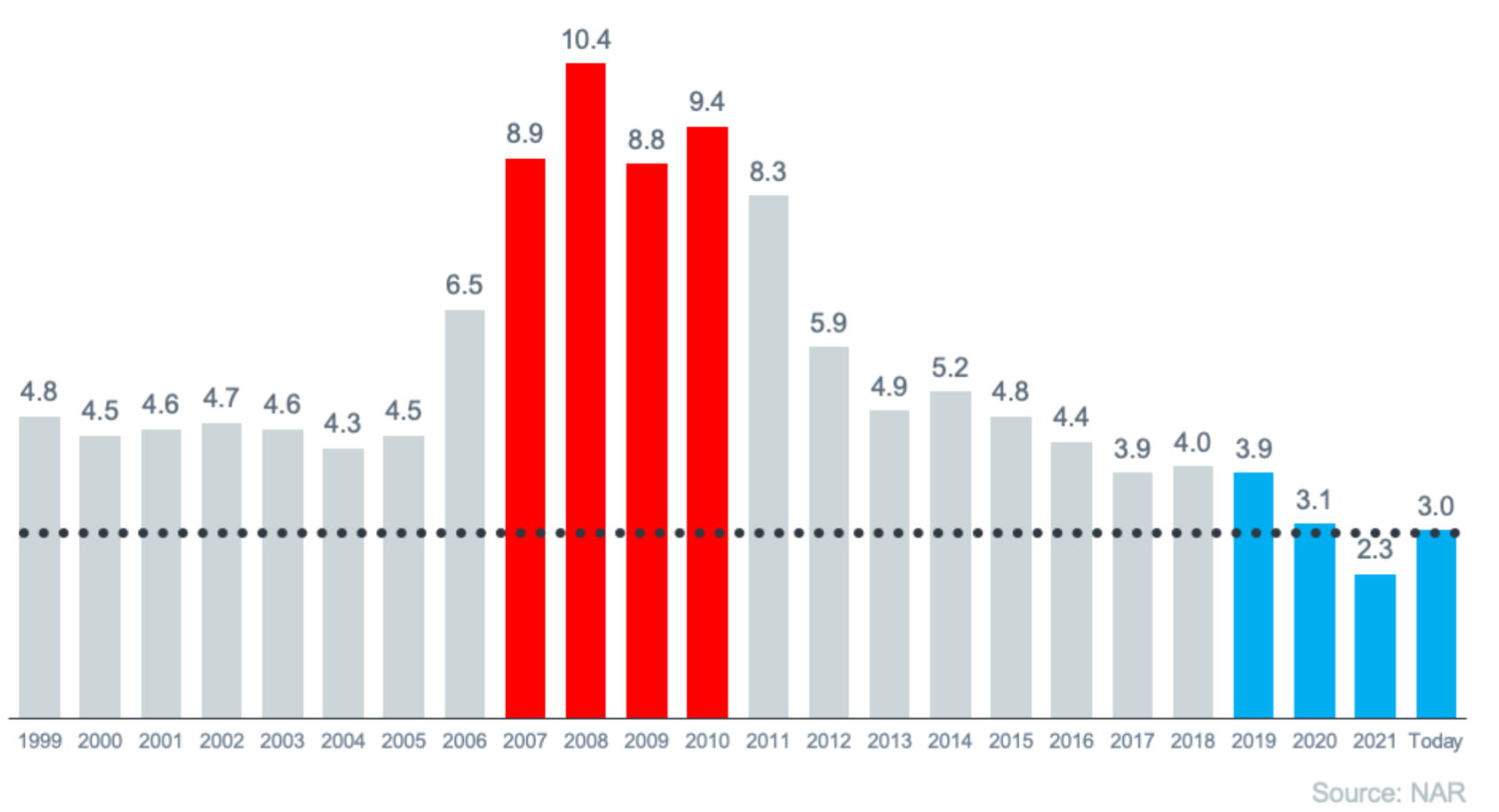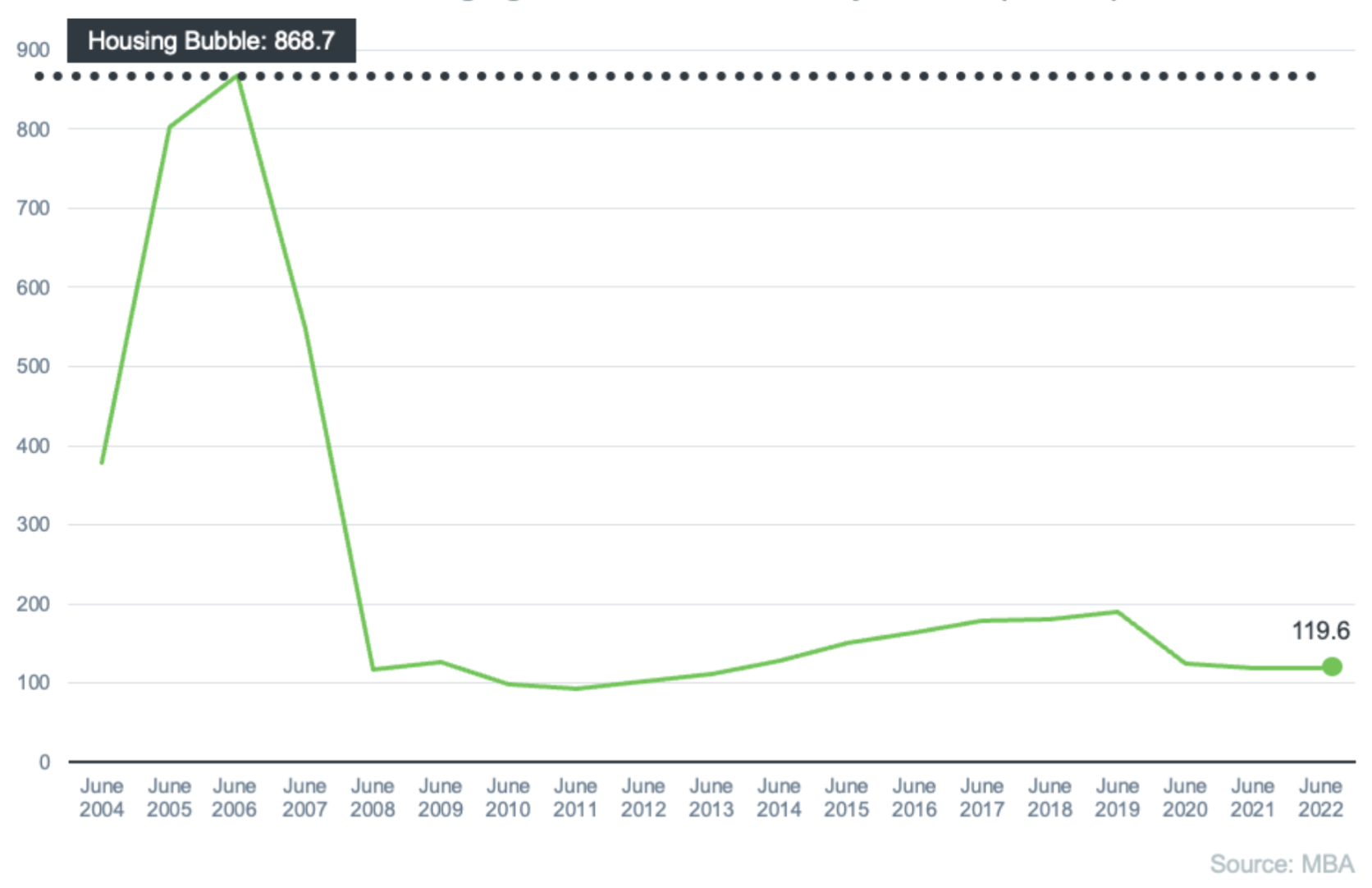
With all the headlines and buzz in the media, some consumers believe that the market is in a tailspin. real estate bubble.
As the real estate market changesYou may be wondering what will happen next.
Naturally, there are concerns that this could be a repeat of what happened in 2008. The good news is that there is hard data to show why this is nothing like last time.
There is a shortage of houses on the market today, not a surplus
The housing stock needed to sustain a normal real estate market is approximately six months. Anything more than that is an overabundance and will cause prices to fall. Anything less is a shortage and will lead to a continuous rise in prices.
For historical context, there were a lot of houses for sale during the housing crisis (many of which were short sales and foreclosures), and this caused prices to fall. Today, supply is growingbut there is still a shortage of stock available.
The graph below uses data of National Association of Realtors (NAR) to show how that time compares to the accident. Today, the unsold stock is only 3.0 months at the current rate of sales.
Stock of houses for sale in months
Number of houses for sale divided by the volume of purchases

One of the reasons stock is still low is because of the sustained under-construction. When you combine that with continued buyer demand as millennials age into their peak home-buying years, it continues to put pressure house prices.
[ipt_fsqm_form id="8″]
This limited supply compared to buyer demand is the reason why the experts predict house prices won't fall this time.
Mortgage standards were much more relaxed during the crisis
In the run-up to the housing crisis, it was much easier to get a mortgage than it is today.
The graph below shows data about the Mortgage Credit Availability Index (MCAI) of Mortgage Bankers Association (MBA). The higher the number, the easier it is to get a mortgage.
Financing Patterns Are Still Under Control

By 2006, banks were creating artificial demand by lowering lending standards and making it easier for anyone to qualify for a home loan or refinance their current home.
At that time, credit institutions took a much greater risk on both the person and the mortgage products offered. This led to mass defaults, foreclosures and falling prices.
Today, things are different, and buyers face much higher standards from mortgage companies. Mark Fleming, chief economist at First American, says:
"Credit standards have tightened in recent months due to increased economic uncertainty and the tightening of monetary policy."
Stricter standards, as they exist today, help avoid the risk of a rash of foreclosures like last time.
Foreclosure volume is nothing like what it was during the crash
The most obvious difference is the number of homeowners who were facing foreclosure after the housing bubble burst. Foreclosure activity is down since the crash because buyers today are more qualified and less likely to default on their loans. The graph below uses data of ATTOM Data Solutions to help tell the story:
Foreclosures Before and Now

What's more, homeowners today are rich in assetsnot used.
In the run-up to the real estate bubble, some homeowners were using their homes as personal ATMs.
Many immediately withdrew their equity as soon as it accumulated. When house values began to fall, some homeowners found themselves in a negative equity situation, where the amount they owed on their mortgage was greater than the value of their home.
Some of these families decided to move away from their homes, and this led to a wave of advertisements for distressed properties (foreclosures and short sales), which were sold at considerable discounts that reduced the value of other homes in the area.
Today, prices have risen a lot in recent years, and this has given homeowners a lot of leverage. assets increaseAccording to Black Knight:
"In total, mortgage holders gained US$ 2.8 trillion in exploitable capital in the last 12 months - an increase of 34% which equates to more than US$ 207,000 in available capital per borrower. . . ."
With the average equity in the house now at US $ 207,000, the owners are in a completely different position this time around.
Any doubts?
Now that we've explained to you that all the signs show that we're not in a real estate bubble, you can consider investing in vacation homes in Orlando. To make the most of all the tips we've given you and go even deeper, you can talk directly to our relationship agents. They are always happy to talk to you to answer any questions you may have about investing in Florida.
In this article, we've covered the topic of the behavior of the real estate market during recessions because it's interesting for those looking to invest in Florida. If you would like to read more content like the one in this article, just stay tuned to our blog.
Did you like the article? Keep an eye on our blog! Looking to live or invest in real estate in Florida? Check out the list of houses for sale in Florida that we've selected for you!
|
Getting your Trinity Audio player ready...
|
Leo Martins
My role is to create an environment for people to connect with Real Estate in Florida
Related Posts
September 25, 2025
An updated overview of renting in Orlando in 2025
Construction cranes aren't the only things going up amid Orlando's boom. This...



